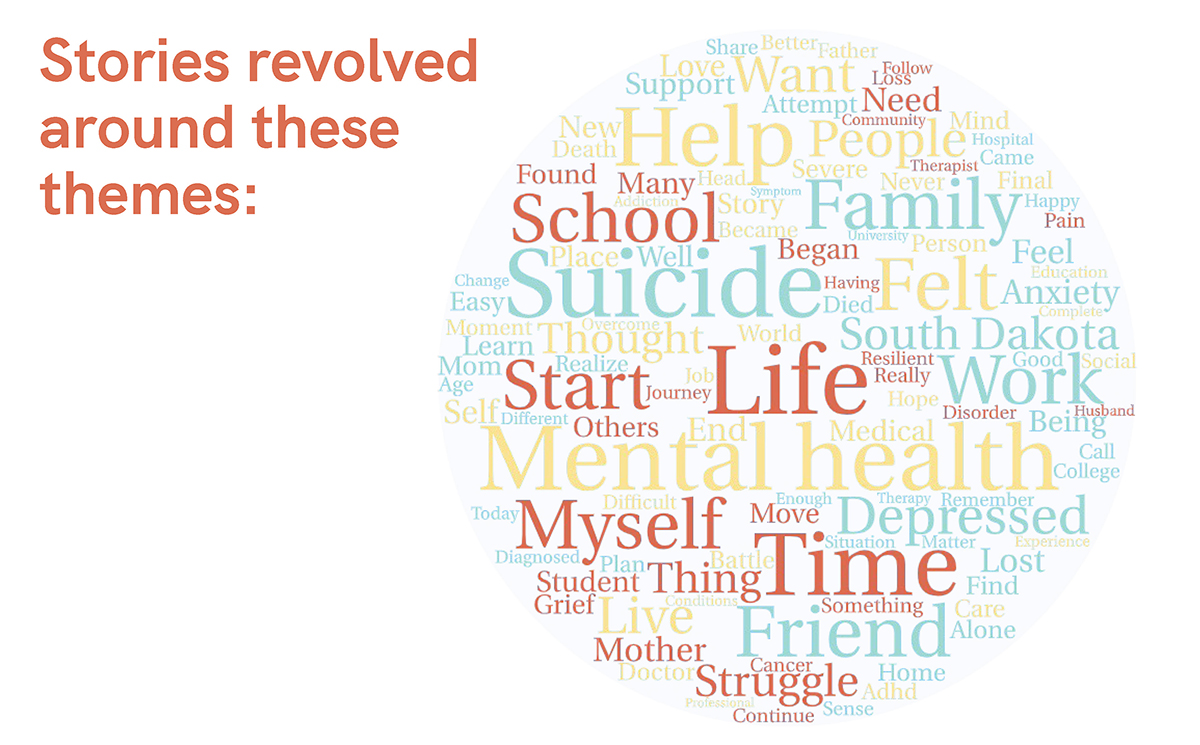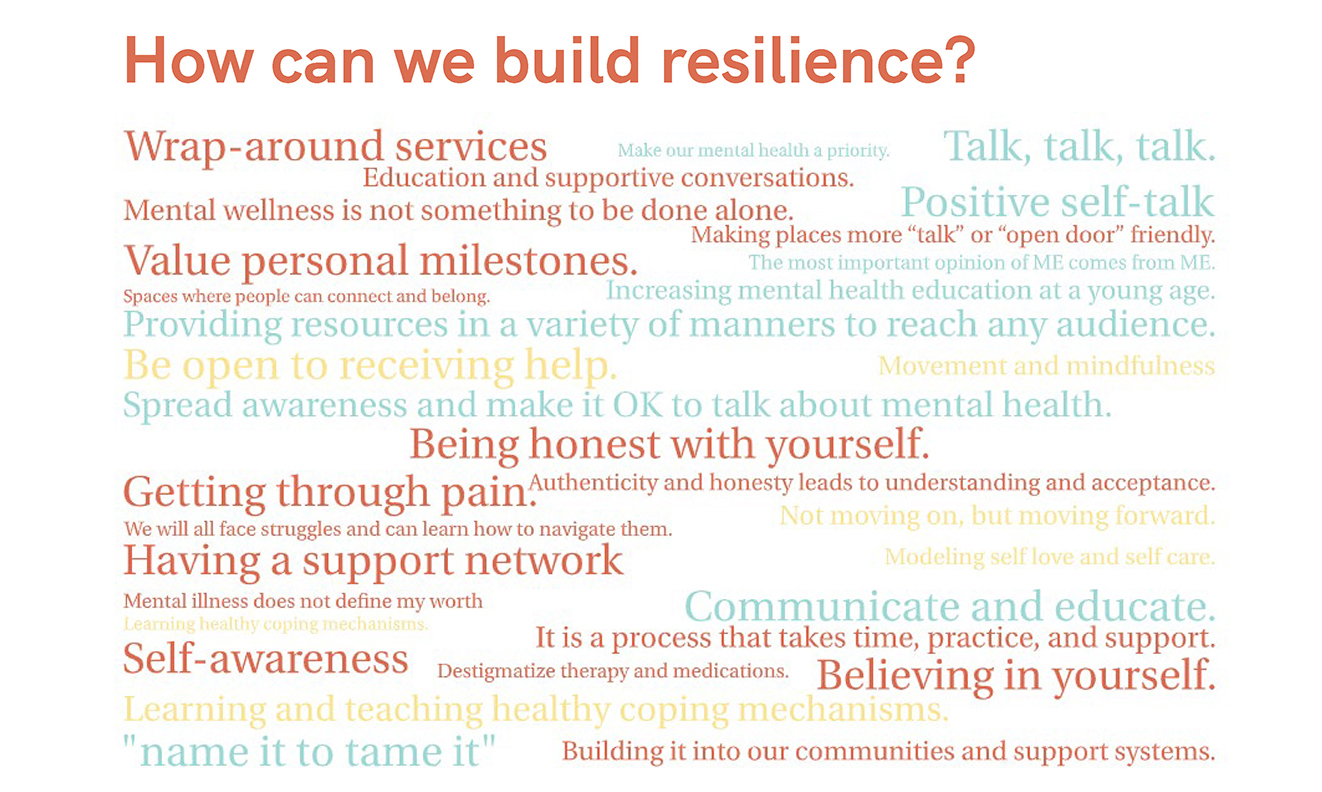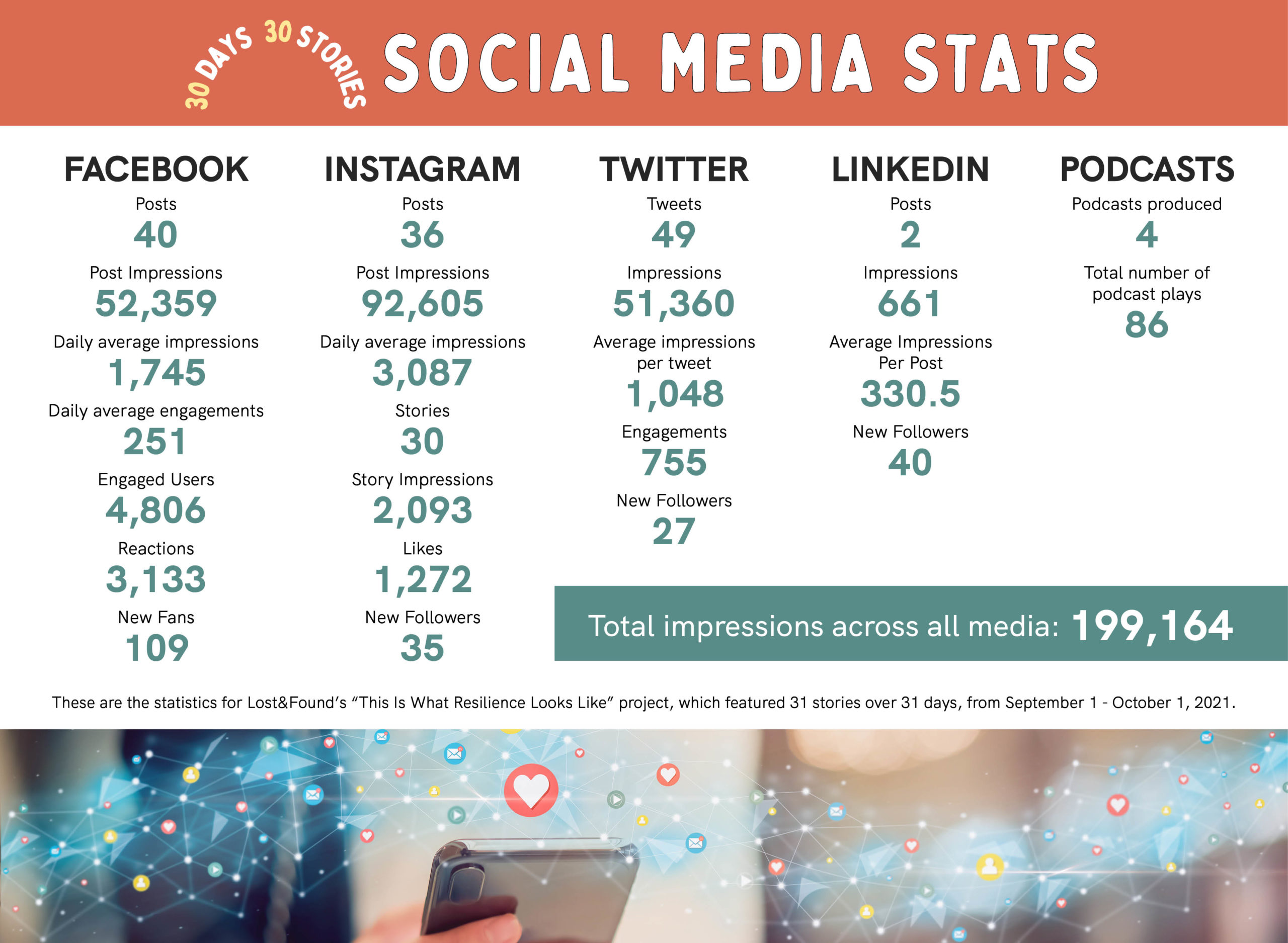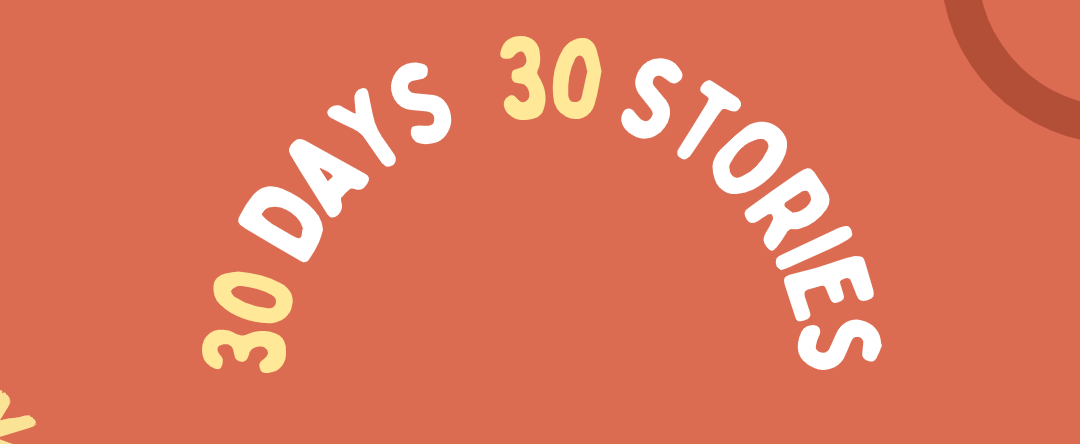What We Learned from the #30Days30Stories Project
For the month of September, Lost&Found shared 30 stories of resilience from people who have dealt with mental health and suicide. Since we finished that intense month of storytelling, we reflected on what we learned from the #30Days30Stories project.
1. Storytelling is suicide prevention.
- Talking about mental health is the first step to improving it. Whether it is speaking up because you yourself need help, or speaking up to see if your friend is OK, talking about mental health and thoughts of suicide saves lives. It helps us feel less alone. Plus, when we say our darkest feelings out loud, we are able to be supported in these feelings.
- We must talk about our emotions and mental health to reduce the stigma. We as a society have gotten better about talking about depression, anxiety, and sadness, but there are still stigmas related to many aspects of mental health and suicide that prevent people from addressing their mental health problems. Also, it’s sometimes easier to encourage a friend or family member to get help than to get help yourself. The more we talk about mental health through stories, the more we can break down stigmas.
- Storytelling is important in part because much of Lost&Found’s work is identity- and relationship-based. Because mental health is tied to each of our unique identities and experiences, storytelling is an intensive and critical element of our work. The project also highlighted how much networks matter to help us find and share those stories.
- Stories and statistics work together to paint the full picture of mental illness in our communities. We’ve all heard about the increase in mental health support needs in our area, state, and nation, but we haven’t all heard the stories of lived experience that accompany those statistics. Stories allow us to see more than the numbers do.
- Storytelling can help us heal. Storytelling is helpful in the healing process for the author, editor, and reader. While it can be difficult to read stories of loss, abuse, and hardship, knowing that the individual is here with us today is powerful. The stories help us know what we can do to support each other.
2. Some stories are more likely to be told than others.
- Men are still reluctant to share their emotions. Overwhelmingly, we didn’t have the turnout of male storytellers that we would like to see. Only six of the 31 stories that we shared were from men or male-presenting people. All are white-presenting and grew up in the Midwest. This is one obstacle that we need to overcome. The “Midwest manly mentality,” for lack of better term, is still keeping men from speaking up. We need to flip the script if we’re going to remove the shame and stigma and allow men to feel comfortable sharing their feelings and struggles.
- We can do more to elevate Native American, rural, and LGBTQ2S+ stories in our state. Although the #303Days30Stories covered a breadth of experiences and mental health conditions, the stories came from people who were overwhelmingly White and mostly female, in terms of gender identity. Ultimately, if we wish to be most effective in a project meant to serve as a point of connection as well as a public service announcement, we need to be intentional about connecting with Native American and rural-focused organizations, as well as connecting with LGBTQ2S+ storytellers. Suicide statistics in South Dakota suggest these communities have many more stories to tell, and telling them could save lives.
- It was significantly easier to find mental health advocates with prior experience or connection to our work to share their story. Many of our participants had previous experience either explaining their mental health conditions with a professional or their family and friends. It may be easier to find storytellers who have already had to explain their experience in some capacity.
3. Improving mental health is possible.
- Many instances of suicidal ideation are related to trauma. Whether physical trauma, sexual abuse, physical abuse, serious accidents, or major losses, trauma affects our brain and our emotions. Trauma can often lead to depression and feelings of despair. However, there is hope: Trauma can be part of your story, but it doesn’t need to write your story. Knowing this helps people in their lifelong journey of resilience.
- Doctors, medication, and therapies can and do help. It’s easier to want to “tough it out” than to want to go to see the doctor or a therapist for bad feelings, intrusive thoughts, and mental health issues. However, these things help! Sometimes it takes a while to find the right medication, the right therapist, or the right system of support. But when a person finds the support(s) that work(s) for them, it is life changing! If you’re reading this and are on this journey — or know someone on this journey — continue to have patience. It might be difficult right now, but it won’t always be.
- Resilient communities do in fact prevent suicide. Many of the storytellers found their strength and support through friends and family. We heard people talk about therapy and medication, yoga, fitness, etc., but the source of strength noted in every single story was at least one trusted person. By building resilient communities and fostering relationships above all else, lives are being saved.
4. Having a greater impact on the mental health system is possible, both with this project and beyond it.
- The project’s reach was surprising. We knew that this project would have a great impact and a large return on investment, but the social media analytics were stunning. We reached thousands of people online. Imagine what we could do if everyone felt safe and comfortable sharing their story and if word of mouth/print testimonials were shared too. With an intentional planning process, this project has the prospect of becoming more widely distributed, supported, and impactful in 2022. It has the potential to change conversations in South Dakota for years to come.
- People relate to their friends, family, and colleagues’ stories of experience with mental health and suicide much more readily than to an organization’s general message. Stories varied in how much engagement they had. The storytellers who shared their stories within their personal networks had the widest reach. Many new people engaged with Lost&Found for the first time simply because someone in their circle was willing to share their story.
- There is still work to be done. A favorite quote says, “We are restless because there is still work to be done,” and the stories, statistics, and response to this project collectively support this idea: There’s a lot of restlessness out there. Many people in our state and country can’t feel comfortable right now because they sense there is something bigger or better or more impactful that they could be doing with their time. That restlessness is a motivator, and some of those people have moved into action. We at Lost&Found can use that restlessness to do more to move people to take actions that save lives.
Here’s what the storytellers taught us:






